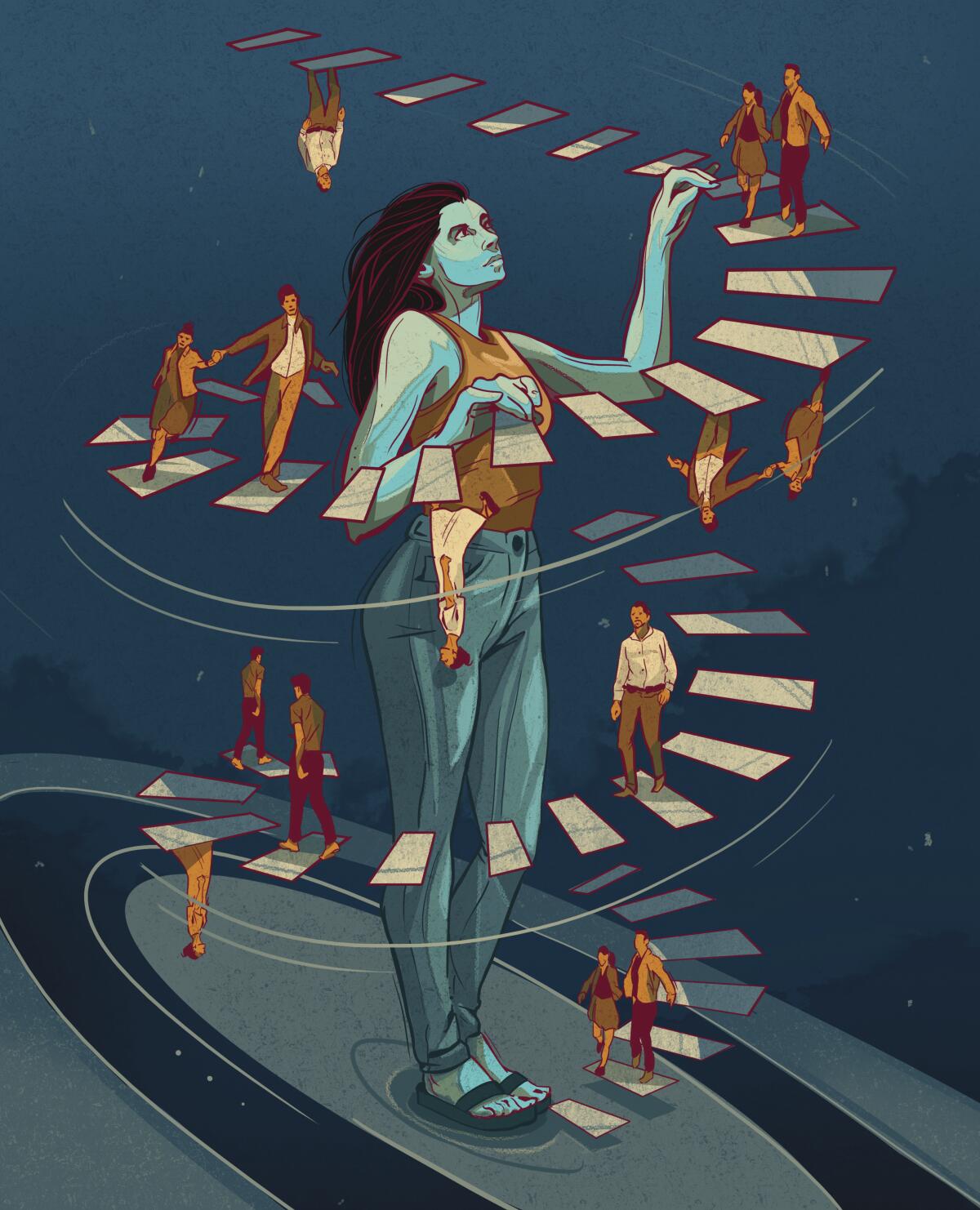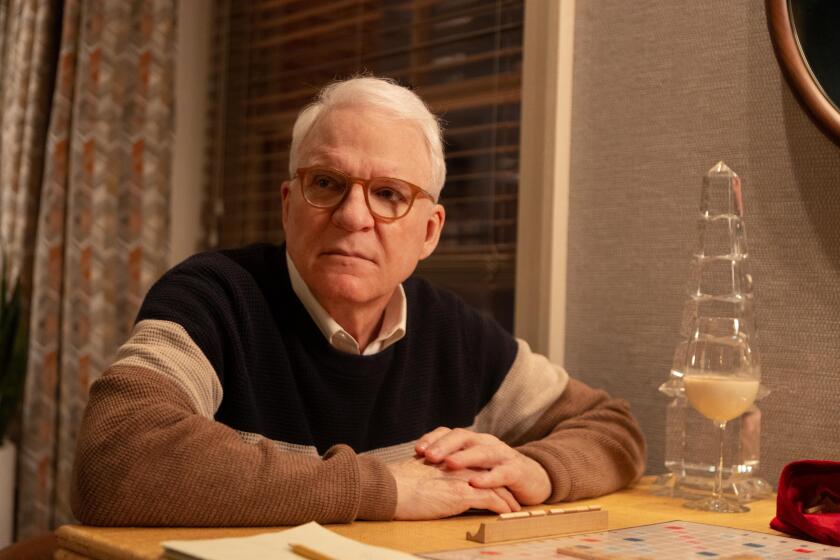How structural twists infuse these series with emotion, tension and suspense

- Share via
“The pandemic has really messed up my sense of time,” says Patrick Somerville, showrunner on HBO Max’s “Station Eleven,” which was adapted from the novel of the same name. “Joe Biden’s been president for a year? What? Everything’s accordioning — longer and shorter. ‘Station Eleven’ reflects what we’ve been through. It’s what we’ve become now; we’re all collapsed into one moment.”
Collapsing into one moment may feel true in real life; it’s also a thoughtful way to think about the structural twists in time some of the most buzzed-about series from the past TV season have put into their stories.
Limited and ongoing series including “Station Eleven,” “Yellowjackets,” “Pachinko,” “Only Murders in the Building,” “The Afterparty,” “Life & Beth” and “Russian Doll” have discarded the traditional linear story arcs for bifurcated (if not trifurcated and beyond) plots that involve extended flashbacks to tell multiple, interconnected stories.
That kind of setup is actually more true to life than simple chronological telling, suggests Phil Lord, executive producer of Apple TV+‘s “Afterparty,” a show that focuses on different witnesses’ takes on the same crime, through unique personality-driven points of view (think “Rashomon” with songs and some animation). “No human being tells a story in real time,” he says. “Humans constructing a narrative are remembering it and writing it at the same time.”
Soo Hugh, showrunner on Apple TV+‘s “Pachinko,” clearly shares that take. Her series, based on a book that tells its story in chronological order, involves flipping back and forth between generations of members of the same Korean family. She notes that she wanted the show to be “a conversation between generations.”
“The show had to be a kaleidoscope of life,” says Hugh. “I wanted a little bit of [real-life] messiness. There’s a character who dies early on, and later we meet this character as a young woman, and I thought: It’s like narrative reincarnation. When you play with time like this, you get to reincarnate characters over and over.”
Real life and memory also permeate Hulu’s “Only Murders,” which tells the story of amateur investigators looking into a crime in their apartment building but switches liberally between the years before the crime and after, with extended segments that are not mere flashbacks. The result in “Murders” — as in these other series — creates a more textured, emotional story that engages the viewer beyond merely finding out whodunit.
Unconventional storytelling makes the dialogue-free “The Boy From 6B” episode, about a deaf character, riveting. Here’s how it came together.
It also comes from a deeply personal place for showrunner and co-creator (with star Steve Martin) John Hoffman, whose childhood friend was killed a year before he began working on the show.
“I would go back and forth in time in that relationship, looking at all the absent time [between us] and trying to fill in those blanks to understand what led to him being [dead] on the floor,” says Hoffman. “Those memories were all underneath the storytelling here.”
“Russian Doll’s” second season is about literal time travel, but the undercurrent of the Netflix show is the emotional connections between generations. “If Season 1 was ‘Groundhog Day,’ then Season 2 is about how [Nadia] starts quantum leaping,” says showrunner and star Natasha Lyonne, adding that for Nadia, time travel is an emotional escape. “She’s being asked to show up for [a] relationship and conveniently finds this way out. … It’s about how you’ve got to make peace with the truth of who you are before you become present in your present life.”
Emotions aside, the technique of using these extended parallel stories also has the added benefit of building tension and suspense into the stories. “Yellowjackets” (Showtime) starts with teen girls stranded in the woods after a plane crash in 1996, then vaults to 2021 without resolving their time there, then bounces back again. Throughout it all is the mystery of what happened to the students.
“By having two, or 10, timelines or varying points of view, you can use all these opportunities to elaborate on patterns that create tension,” says Ashley Lyle, co-creator and co-showrunner with husband Bart Nickerson. “It’s really rich from a storytelling standpoint to take a character and tell the story about the different points in their life, how they’re fundamentally different — and fundamentally the same.”
There’s another hidden benefit in these kinds of complex stories: They’re not designed for those dividing their attention between screens. “We are trying to make TV for people who are paying attention and not half-watching on their phone,” says “Life & Beth” (Hulu) showrunner Daniel Powell. “Beth” flips between its main character as an adolescent and an adult, with plots based on star Amy Schumer’s teenage journals. “It’s meant for an audience that wants to be deeply invested.”
That struggle is ongoing for show creators, who are trying to present complex, nuanced stories but can get pushback from within. “There’s such pressure to spoon-feed information in the streamer world because there’s a terror that if someone in the audience is slightly confused, they will quit watching,” says Somerville. “I like it when a show trusts me to do the math.”
“Television, much more than the movies, is a direct conversation with the audience,” says Lyonne. “People have their cellphones, and they’re not afraid to use them. The audience has to choose to stay on the ride.”
More to Read
From the Oscars to the Emmys.
Get the Envelope newsletter for exclusive awards season coverage, behind-the-scenes stories from the Envelope podcast and columnist Glenn Whipp’s must-read analysis.
You may occasionally receive promotional content from the Los Angeles Times.











